2016.04.24.
Right after the completion of Suborder Adephaga, I started to work on Suborder Polyphaga. In quantity, I got five an half drawers, however, with some free space in Adephaga and some pluses, Suborder Polyphaga is sorted in seven drawers. I still have a lot of unpreserved specimens with new species to be added into the collections, so I believe I will have to prepare more drawers for the Suborder Polyphaga. Unlike Suborder Adephaga, I collected a lot of Polyphaga species, and many were identified to the species level. I purchased 100-kit small folding unit trays, and I used up all of them already. Fortunately, I doubt I need anymore for other groups of collections. As mentioned in previous post, Sorting Suborder Adephaga, I followed the orders of how BugGuide layed out the orders of Suborder, Family, and Subfamily. Then I arranged alphabetically anything below than that. HOWEVER, there were some exceptions.
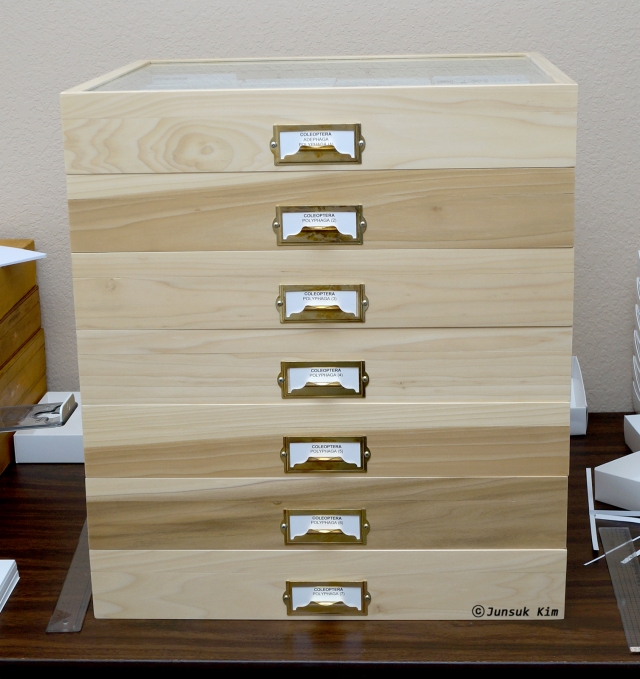
As mentioned in the beginning, total seven drawers with the top one being mostly filled up with Suborder Adephaga.
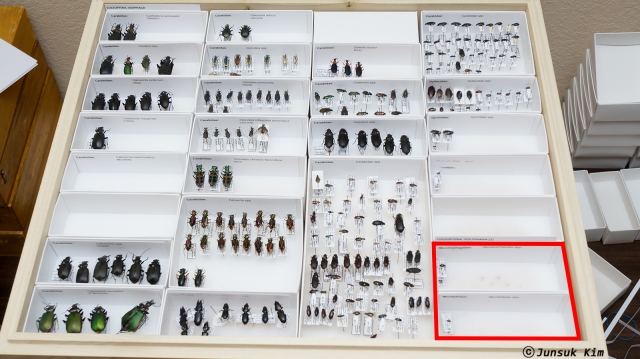
[COL: Adephaga, Polyphaga (1)]
First drawer, which is mostly filled up with Suborder Adephaga has two slots for Suborder Polyphaga.
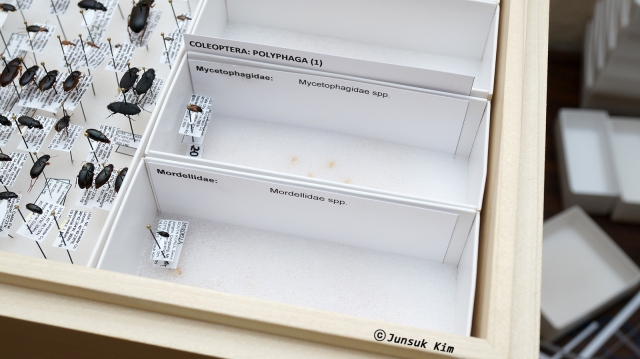
I’m pretty sure I got couple of more specimens for each family, but I cannot find them. I’m not sure if I can find under the piles of papered specimens.

[COL:Polyphaga (2)]
Many beetles, Tenebrionidae to Cantharidae. A lot of Cerambycidae and Chrysomelidae.
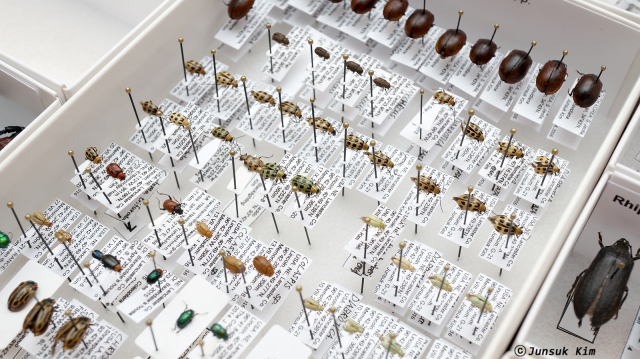
Chrysomelidae. Many are identified, and many are not yet identified..
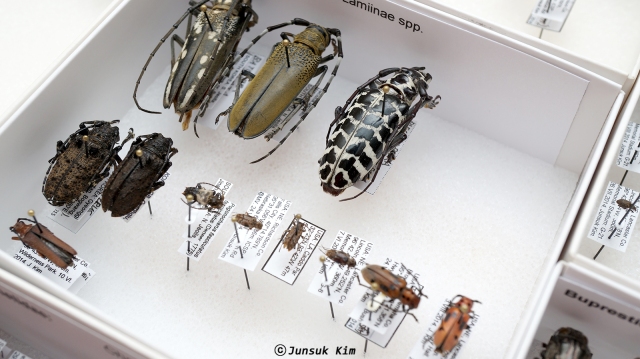
I grouped up all the Cerambycidae in subfamilies. I rarely ever collect Cerambycidae, so I think this is the best way to sort them.
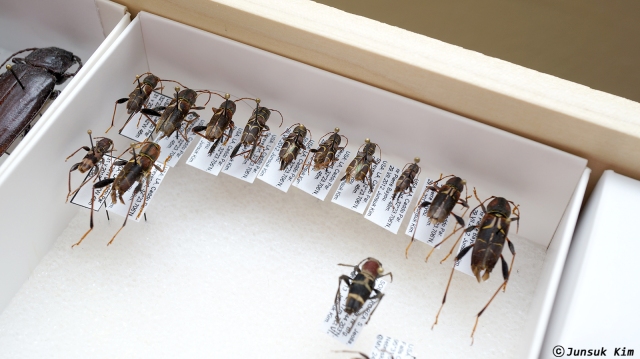
Another Cerambycidae, the subfamily Cerambycinae. I’ve identified all of them, I just haven’t labeled the IDs.

[COL:Polyphaga (3)]
Elateridae, Lympyridae, Lycidae, Hydrophilidae, Histeridae, Nicrophoridae, Staphylinidae, Dermestidae, Bostrichidae, then Lucanidae. Some seems to be missing, but I do have specimens, I just haven’t pinned yet. They are either stored in the alcohol, or packaged for storage purpose.
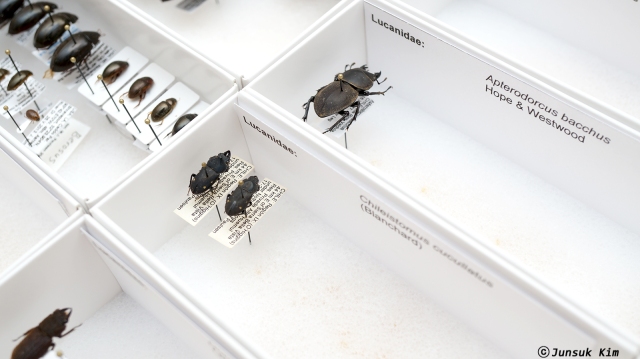
Two interesting Lucanidae species from South America. One is Apterodorcus Bacchus Hope in Westwood, and the other one is Chileistomus cucullatus (Blanchard).

Lucanus capreolus (Linnaeus). I believe all the specimens in there are Nebraska specimens, except one female on the left.
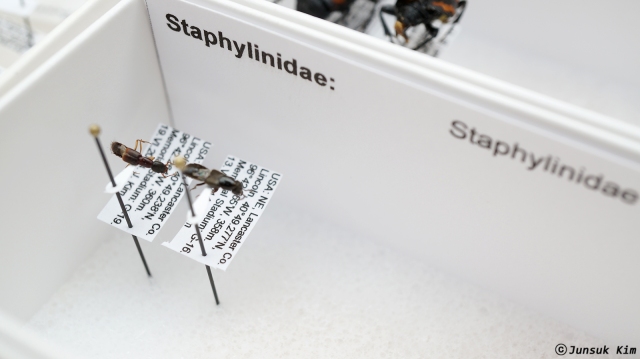
Family Staphylinidae. I don’t know them very well, but when I see them, I always collect them (as well as all other insect species).
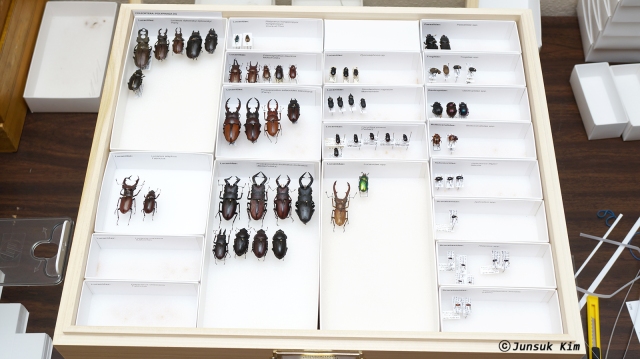
[COL:Polyphaga (4)]
More Lucanidae plus Scarabaeidae. I got more Lucanidae species, but haven’t pinned them yet.
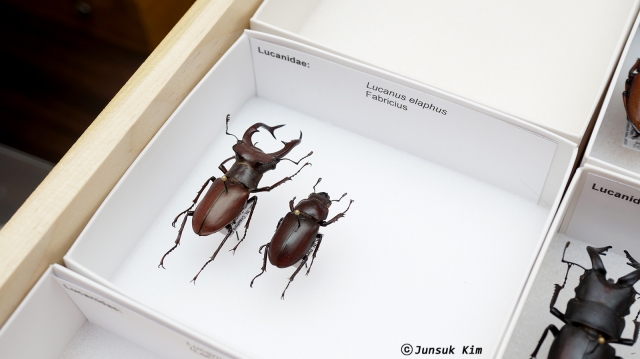
Lucanus elaphus Fabricius. Not so much of a fan, but largest species in Family Lucanidae found in the North America.
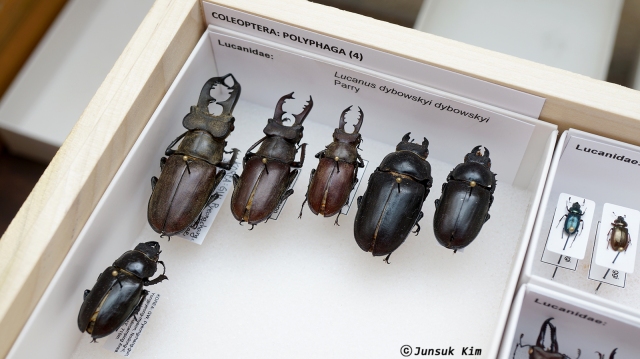
Lucanus dybowskyi dybowskyi Parry. One of the favorite species indeed. One male on the very left and female on second row is personal collections in summer 2013 at Gangwon, South Korea.
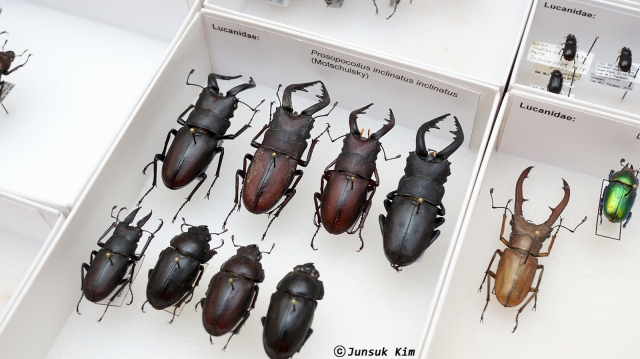
Prosopocoilus inclinatus inclinatus (Motschulsky). Very fascinating species indeed.
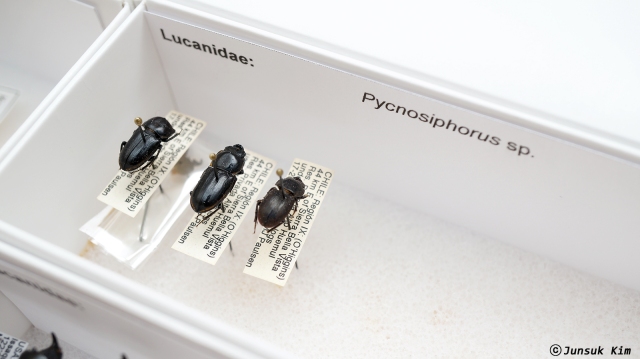
Another South American Lucanidae species. I know it belongs to the Pycnosiphorus, but haven’t look at them closely enough to figure out the species.
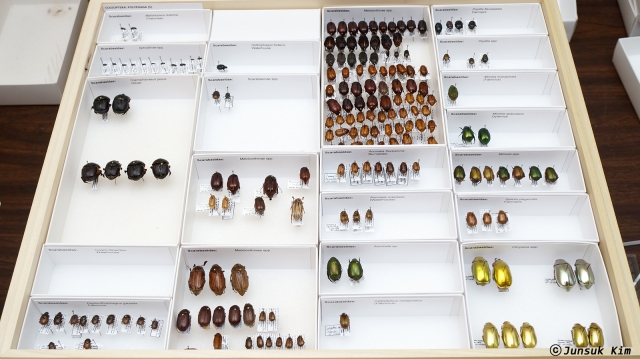
[COL:Polyphaga (5)]
I started to fall into the Subfamily Aphodiinae ever since I observed them under microscope. I got multiple species identified with the help of Dr. MJ Paulsen, and I still have tons of unidentified specimens.
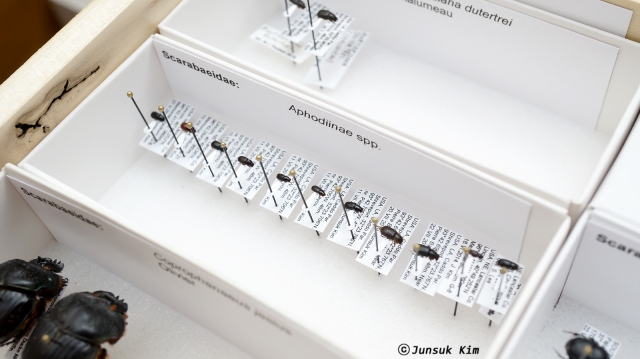
Yes, the Aphodiinae.
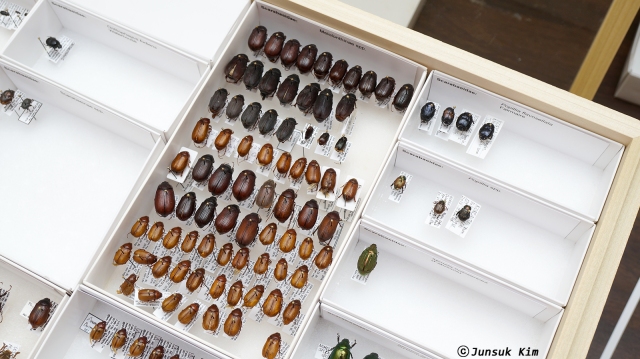
I’m also interested in the subfamily Melolonthinae. One of the common groups to be found on the light trap and many species are easily collected. I’ve identified many, but still got a huge number not yet identified.
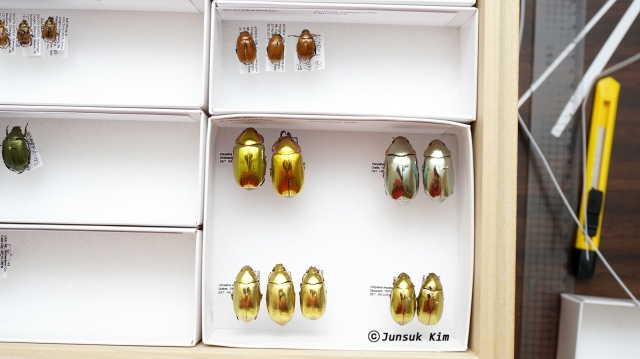
Chrysina spp. They are fabulous. Left to right on top then bottom: Chrysina aurigans, C. chrysargirea, C. cupreomarginata, C. resplendens.
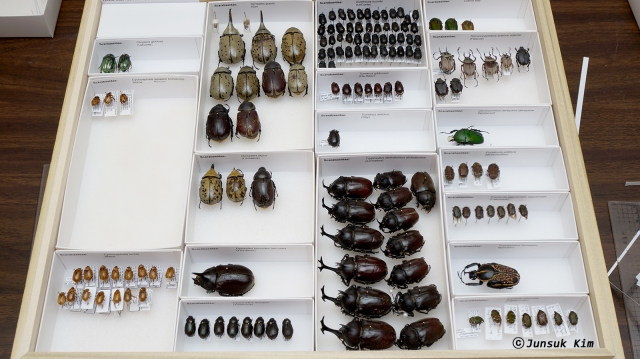
[COL:Polyphaga (6)]
I got more species in Rutelinae, Dynastinae, Cetoniinae, just haven’t pinned them yet.
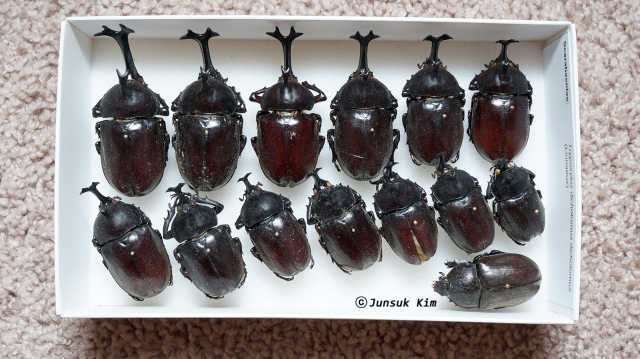
Trypocylus dichotomus dichotomus (Linnaeus). A great example of ALLOMETRY. Thanks to many Korean colleagues, I was able to obtain this much of specimens collected from South Korea.
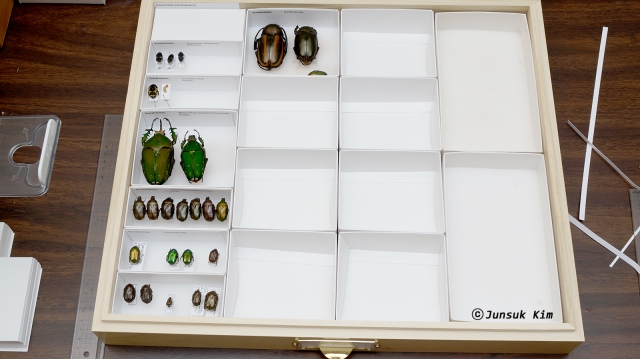
[COL:Polyphaga (7)]
The last drawer (for now). More Subfamily Cetoniinae, then Euchirinae.
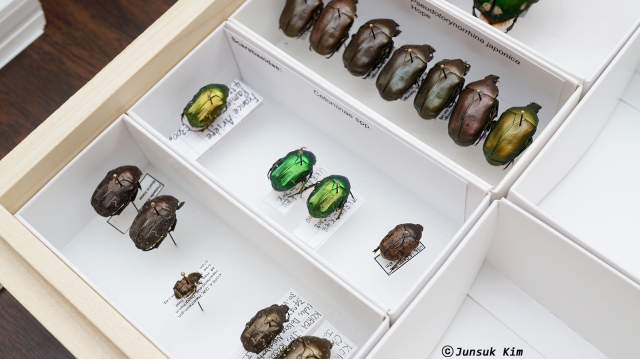
Many Cetoniinae are identified, but some are too difficult or too similar to the other species so I haven’t take a closer observation on them yet. Three unidentified specimens are from France and Ukraine, which I got no source to get help.
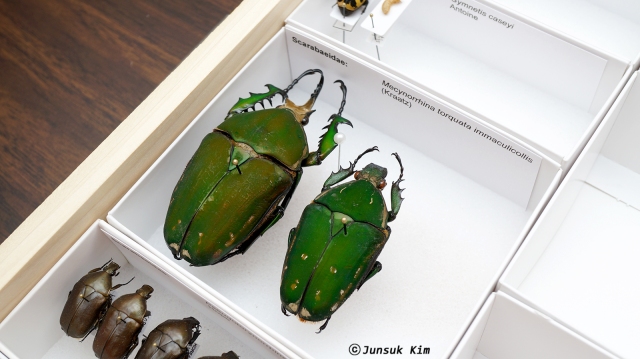
Mecynorrhina torquata immaculicollis (Kraatz). Quite a large Subfamily Cetoniinae species.
I got a lot more species, not shown on the pictures, I either forgot to add in the drawers, or not yet preserved or pinned. BUT for now, it’s done.

